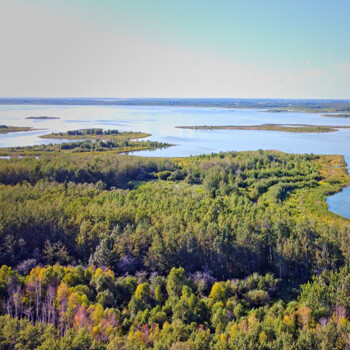BHB101: Something Special in Your Backyard

If you live in or have spent time in the region east of Edmonton that includes portions of the counties of Strathcona, Beaver, Lamont, Leduc and Camrose, you’re probably familiar with the distinct, local geography that surrounds you – the boreal mixed wood forest and the hummocky “knob and kettle” terrain of the Beaver Hills (or Cooking Lake Moraine, another term for the area) that forms a patchwork of depressional areas, many of which support wetlands, small lakes and streams.
The Beaver Hills, known as amiskwaciy in Cree, is an important place that provides a diversity of productive, critical habitat to many species of wildlife and migratory bird species. But the importance of the region extends beyond its exceptional landscape and biodiversity. From its millennia long and rich heritage as an important place for Indigenous Peoples, to subsequent fur trade era and colonial settlement, the region is home to many people, past and present.
It is a region unlike others. In fact, the geographical and biodiversity uniqueness and the historical and cultural significance of the Beaver Hills, coupled with the active conservation that has taken place here since the end of the 19th century, has earned it a place as a priority natural area in the greater Edmonton region and well beyond. This is why the Beaver Hills was designated as a biosphere on March 19, 2016, by the United Nations Educational, Scientific and Cultural Organization (UNESCO), joining the worldwide network of 738 biospheres in 134 countries.
You’re probably wondering, what are UNESCO-designated biospheres? Simply put, they are distinct regions in which people live and work in harmony with nature. This means that local communities and interested stakeholders collaborate on:
- conservation of biodiversity and cultural diversity,
- economic development that is culturally and environmentally sustainable, and
- research, monitoring, education and training.
The Beaver Hills Biosphere isn’t just one organization. The Biosphere represents the coming together of many partners focused on researching, understanding, building capacity and implementing innovative efforts that conserve biodiversity, support communities, facilitate sustainable development, and mitigate environmental change in this resilient Alberta landscape.
But it isn’t all work and no play. The distinctive character, ecology and history, and the designated parks and protected areas that account for a quarter of the region, make it an incredible place to experience nature. There are numerous and diverse recreational activities and tourism opportunities in the Beaver Hills. From hiking to wildlife watching to camping and stargazing and more, the possibilities are endless.
So, the next time you are travelling west from Tofield, along highway 14 passing South Cooking Lake, or going south to visit Miquelon Lake or heading north towards the Cooking Lake-Blackfoot Provincial Recreation Area or driving east of Edmonton, along Highway 16 between Sherwood Park and Elk Island National Park, remember you’re seeing and experiencing the Biosphere in your backyard.